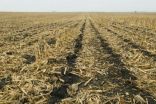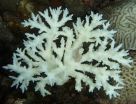(Press-News.org) A worldwide review of global rainfall data led by the University of Adelaide has found that the intensity of the most extreme rainfall events is increasing across the globe as temperatures rise.
In the most comprehensive review of changes to extreme rainfall ever undertaken, researchers evaluated the association between extreme rainfall and atmospheric temperatures at more than 8000 weather gauging stations around the world.
Lead author Dr Seth Westra said, "The results are that rainfall extremes are increasing on average globally. They show that there is a 7% increase in extreme rainfall intensity for every degree increase in global atmospheric temperature.
"Assuming an increase in global average temperature by 3 to 5 degrees Celsius by the end of the 21st century, this could mean very substantial increases in rainfall intensity as a result of climate change."
Dr Westra, a Senior Lecturer with the University of Adelaide's School of Civil, Environmental and Mining Engineering and member of the Environment Institute, said trends in rainfall extremes were examined over the period from 1900 to 2009 to determine whether they were becoming more intense or occurring more frequently.
"The results show that rainfall extremes were increasing over this period, and appear to be linked to the increase in global temperature of nearly a degree which also took place over this time.
"If extreme rainfall events continue to intensify, we can expect to see floods occurring more frequently around the world." Dr Westra said.
The strongest increases occurred in the tropical countries, although some level of increase seems to be taking place at the majority of weather gauging stations.
Dr Westra said, "Most of these tropical countries are very poor and thus not well placed to adapt to the increased risk of flooding, which puts them in a larger threat of devastation."
### This work is being published in the Journal of Climate and can be seen online.
The research also involved researchers from the University of New South Wales, Australia and the University of Victoria, Canada.
Increases in extreme rainfall linked to global warming
2013-02-01
ELSE PRESS RELEASES FROM THIS DATE:
New protocol recommendations for measuring soil organic carbon sequestration
2013-02-01
URBANA – Increased levels of greenhouse gases, particularly carbon dioxide (CO2), have been associated with the burning of fossil fuels, deforestation, cultivation of grasslands, drainage of the land, and land use changes. Concerns about long-term shifts in climate patterns have led scientists to measure soil organic carbon (SOC) in agricultural landscapes and to develop methods to evaluate how changes in tillage practices affect atmospheric carbon sequestration. University of Illinois professor of soil science Kenneth Olson has used data collected over a 20-year period ...
Gap geometry grasped
2013-02-01
Theoretical physicist Moumita Maiti and colleagues at the Jawaharlal Nehru Centre for Advanced Scientific Research in Bangalore, India, have now implemented an algorithm for analysing void space in sphere packing, where the spheres need not all be the same size. This method, about to be published in EPJ E, could be applied to analyse the geometry of liquids present between multi-sized spheres that are akin to a model for porous material. This provides a tool for studying the flow of such fluids through porous material. More importantly, it can also be used to study the ...
How do corals survive in the hottest reefs on the planet?
2013-02-01
Coral reefs are predicted to decline under the pressure of global warming. However, a number of coral species can survive at seawater temperatures even higher than predicted for the tropics during the next century. How they survive, while most species cannot, is being investigated by researchers at the National Oceanography Centre, Southampton (NOCS) and New York University Abu Dhabi (NYUAD).
We tend to associate coral reefs with tropical seas of around 28 degrees, where even slight warming can have devastating effects on corals. But in the Arabian/Persian Gulf, corals ...
European investments in advanced computing systems deliver results
2013-02-01
January 31, 2013 - At the HiPEAC 2013 conference in Berlin, KALRAY demonstrated MPPA256, the world's first supercomputer-on-a-chip, consisting of 256 computing cores. This innovative processor combines the ultimate in several processor types and will enable a whole new class of embedded and industrial applications in the fields of image processing, signal processing, control, communications and data security. The MPPA256 is completely designed in Europe and is only one of the success stories resulting from the 170 million Euro investment in carefully selected European funded ...
Routes towards defect-free graphene
2013-02-01
A new way of growing graphene without the defects that weaken it and prevent electrons from flowing freely within it could open the way to large-scale manufacturing of graphene-based devices with applications in fields such as electronics, energy, and healthcare.
A team led by Oxford University scientists has overcome a key problem of growing graphene – a one atom-thick layer of carbon – when using an established technique called chemical vapour deposition, that the tiny flakes of graphene form with random orientations, leaving defects or 'seams' between flakes that ...
Study: Infection preventionists know safe care
2013-02-01
Washington, DC, February 1, 2013 – There is general agreement among hospital infection preventionists (IPs) with respect to which practices have weak or strong evidence supporting their use to prevent healthcare-associated infection, according to a new study published in the February issue of the American Journal of Infection Control, the official publication of the Association for Professionals in Infection Control and Epidemiology (APIC).
Furthermore, IPs with certification in infection prevention and control (CIC®) are two to three times more likely to perceive the ...
New study sheds light on link between dairy intake and bone health
2013-02-01
Boston - A study by researchers at the Institute for Aging Research (IFAR) at Hebrew SeniorLife, an affiliate of Harvard Medical School (HMS), has found that dairy intake —specifically milk and yogurt —is associated with higher bone mineral density (BMD) in the hip, but not the spine. Cream, on the other hand, may be associated with lower BMD overall. Published today in the journal Archives of Osteoporosis, these findings suggest that not all dairy products are equally beneficial in promoting bone strength.
"Dairy foods provide several important nutrients that are beneficial ...
If you are impulsive, take modafinil and count to 10
2013-02-01
Philadelphia, PA, February 1, 2013 – Poor impulse control contributes to one's inability to control the consumption of rewarding substances, like food, alcohol, and other drugs. This can lead to the development of addiction. FDA-approved medications for alcoholism, like naltrexone (Revia) and disulfiram (Antabuse), are thought to reduce alcohol consumption by curbing cravings and creating unpleasant reactions to alcohol, effects which reduce the desire to drink alcohol.
New medications, however, might target the uncontrollable urges to consume drugs of abuse. The idea ...
Programming cells: The importance of the envelope
2013-02-01
In a project that began with the retinal cells of nocturnal animals and has led to fundamental insights into the organization of genomic DNA, researchers from Ludwig-Maximilians-Universitaet (LMU) in Munich show how the nuclear envelope affects nuclear architecture - and gene regulation.
The double-stranded DNA molecules that make up the genetic material are wrapped around protein complexes to form compacted "chromatin". The active portion of the genome is less densely packed, and thus more easily accessible, than the inactive fraction, and is referred to as euchromatin. ...
Can plants be altruistic? You bet, says new CU-Boulder-led study
2013-02-01
We've all heard examples of animal altruism: Dogs caring for orphaned kittens, chimps sharing food or dolphins nudging injured mates to the surface. Now, a study led by the University of Colorado Boulder suggests some plants are altruistic too.
The researchers looked at corn, in which each fertilized seed contained two "siblings" -- an embryo and a corresponding bit of tissue known as endosperm that feeds the embryo as the seed grows, said CU-Boulder Professor Pamela Diggle. They compared the growth and behavior of the embryos and endosperm in seeds sharing the same mother ...


